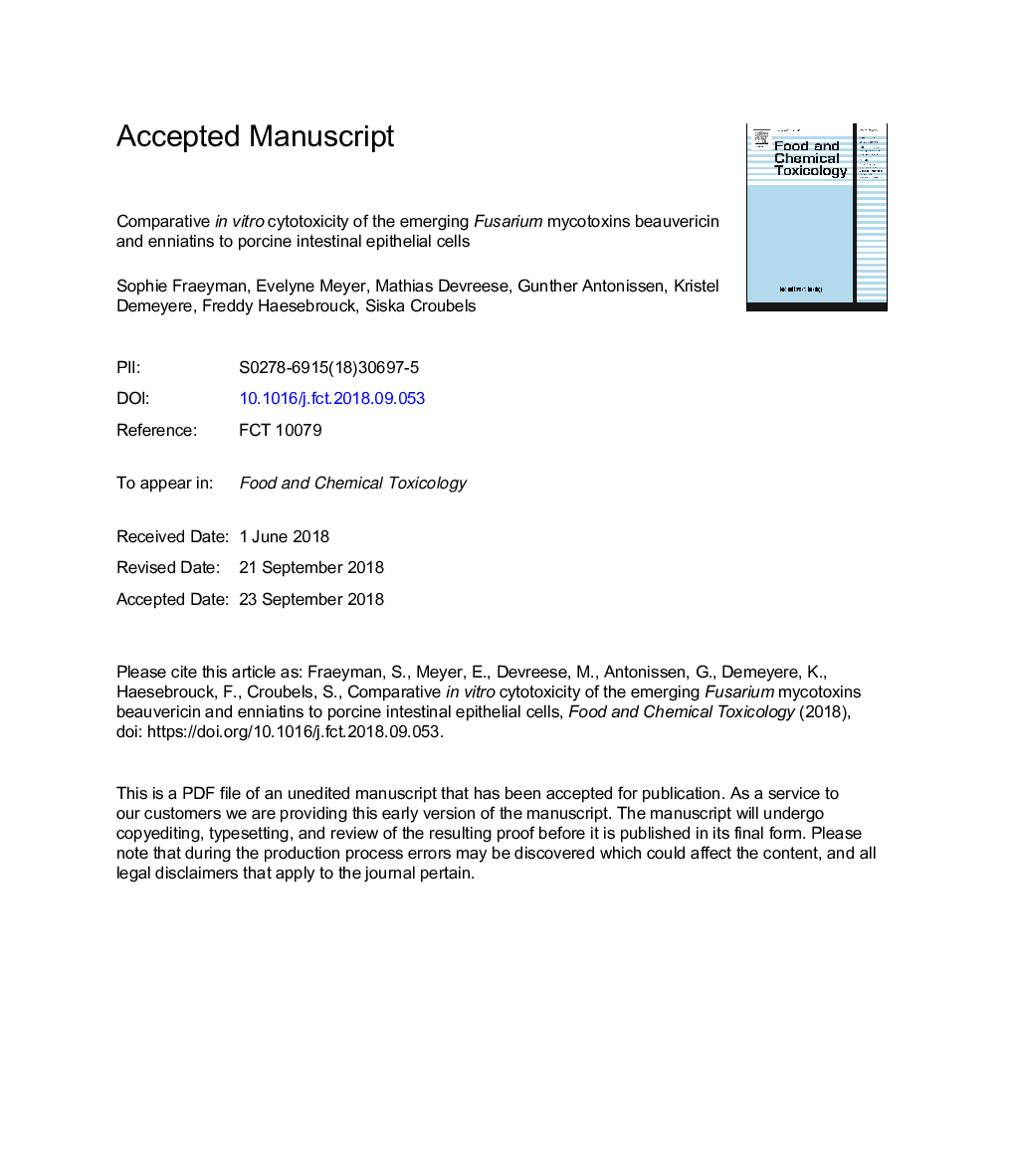| Article ID | Journal | Published Year | Pages | File Type |
|---|---|---|---|---|
| 11033925 | Food and Chemical Toxicology | 2018 | 23 Pages |
Abstract
The emerging Fusarium mycotoxins beauvericin (BEA) and enniatin (ENN) A, ENN A1, ENN B and ENN B1 gain increasing interest due to their highly prevalent contamination of cereals and cereal products. After oral intake, the gastro-intestinal tract is the first possible site of interaction. In the present in vitro study, the relative cytotoxicity of these mycotoxins towards proliferating and differentiated intestinal porcine epithelial cells of the jejunum (IPEC-J2) was evaluated using flow cytometric viability analysis. IPEC-J2 cells showed the highest sensitivity to BEA and ENN A. In proliferating cells, incubation for 24h with 10â¯Î¼M BEA caused complete disruption, while the viability percentage declined to 32% after 24h of incubation with 10â¯Î¼M ENN A. ENN A1 and ENN B1 were less cytotoxic with 87% and 93% viable cells after 24h of incubation with 10â¯Î¼M ENN A1 and B1, respectively. ENN B was the least cytotoxic since incubation at concentrations up to 100â¯Î¼M resulted in 83% viable proliferating cells. The same trend was observed for differentiated cells. The limited in vitro cytotoxic effect of ENN B on intestinal cells corroborates previous in vivo findings in broiler chicken in which dietary ENN B had minimal effect on intestinal morphometry.
Keywords
5-bromo-2-deoxyuridineEnniatin AEnniatin B1BEAIPEC-J2H295RTEERLPOCaco-2Enniatin BMTTROSHuman colon adenocarcinomaenniatinBrdUBeauvericinApoptosisNeutral redemergingFlow cytometryLodlimit of detectiontransepithelial electrical resistanceEnnNecrosislog PLipid peroxidationPropidium iodideReactive oxygen species
Related Topics
Life Sciences
Agricultural and Biological Sciences
Food Science
Authors
Sophie Fraeyman, Evelyne Meyer, Mathias Devreese, Gunther Antonissen, Kristel Demeyere, Freddy Haesebrouck, Siska Croubels,
